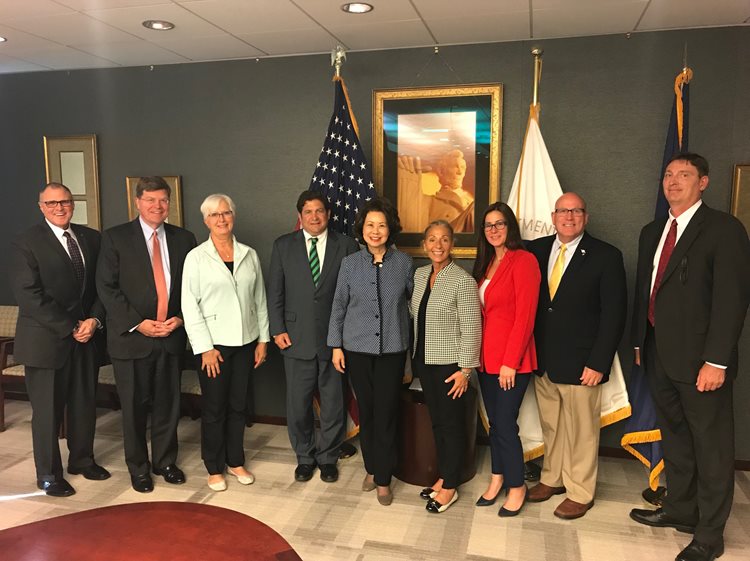Port Commission Signs Land Agreement for Fourchon Island; Port Submits Draft Feasibility Study to Deepen Port Fourchon Channel
The Greater Lafourche Port Commission (GLPC) took a major step forward in its plans to develop the next generation of Deepwater port facilities at Port Fourchon, thanks to an agreement signed in September by the Edward Wisner Donation Trust granting GLPC a long-term lease of more than 900 acres of property immediately south of the Port, to be known as Fourchon Island.
Also, in mid-September, the port submitted to the U.S. Army Corps of Engineers (USACE) a Draft Feasibility Report and Draft Environmental Impact Statement, following more than two years of environmental, economic and engineering studies to determine the feasibility of a deeper draft channel in to Port Fourchon. The port said these two significant milestones will usher in a new era of growth for the port.
The long-term lease secures access to this property for the future development of the Gulf’s first purpose-built, deepwater rig repair and refurbishment facility to service the major maintenance and eventual decommissioning needs of the Deepwater oil and gas rigs Port Fourchon services. While GLPC will deepen the draft to the new facility, as well as dredge the slip and build the land and basic infrastructure as part of its Fourchon Island development plan, it will be private industry who will eventually construct the rig repair and refurbishment facilities.
According to Executive Director of GLPC Chett Chiasson, with the port’s development since 2000, GLPC has constructed approximately 1,000 acres of wetlands through its environmental mitigation program, elevated and developed an additional 1,000+ acres, which otherwise might have been lost to coastal land loss, and constructed the first successful maritime forest ridge restoration project in the state in line with its holistically resilient approach to development. This new phase of development on Fourchon Island would scale up those positive environmental works and present significant economic opportunities for the state and nation, Chiasson added.
The Corps study considered the environmental impacts and benefits to the nation of deepening the main channel of Bayou Lafourche through Belle Pass from its intersection with Pass Fourchon out in to the Gulf of Mexico to a depth of up to 50 feet, to a distance of approximately 6 miles. The study also considered the economics of developing the Fourchon Island area as a cutting edge deepwater rig repair and refurbishment facility to enable Port Fourchon’s tenants to bring in deepwater rigs and assets for significant maintenance and repair work, which currently can only be accommodated in other states or overseas.
This next generation development will add up to about 500 acres of slips and industrial land when fully developed, and the associated dredging work to deepen the port’s entrance channel will generate millions of cubic yards of sediments to be used for wetland restoration projects.
“Probably the most exciting added benefit of the project is the ability to utilize the dredging works as a renewable borrow source for coastal restoration works in one of the most sediment-starved locations along the Louisiana coast for both the mitigation required and other coastal restoration projects that will result in thousands of acres of wetlands restored in order to complete the project’s development. What that means is that it provides us an opportunity to build a future which is holistically resilient to the forces of coastal land loss,” Chiasson said.
It is anticipated that the final version of the Feasibility Report and EIS will be submitted to the Assistant Secretary of the Army for Civil Works in Washington, DC by the end of 2018 and authorized by mid-2019 with development to commence by the end of 2020. Work on some preliminary infrastructure necessary to access the property may commence ahead of the bulk of these works.




